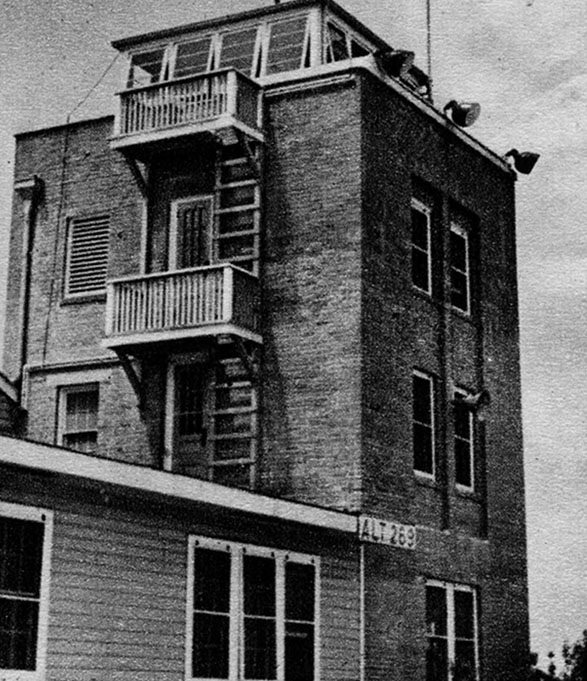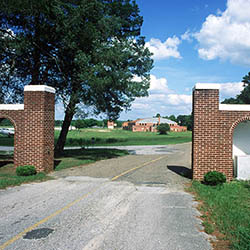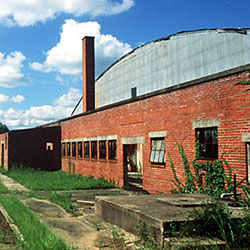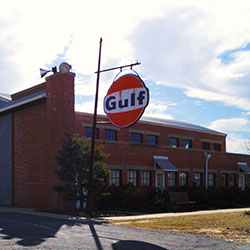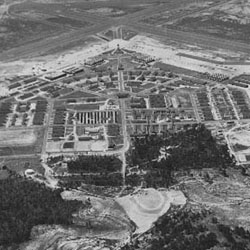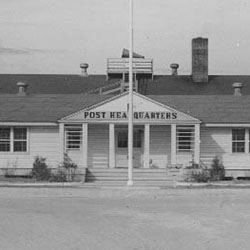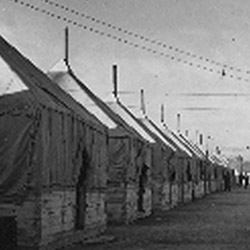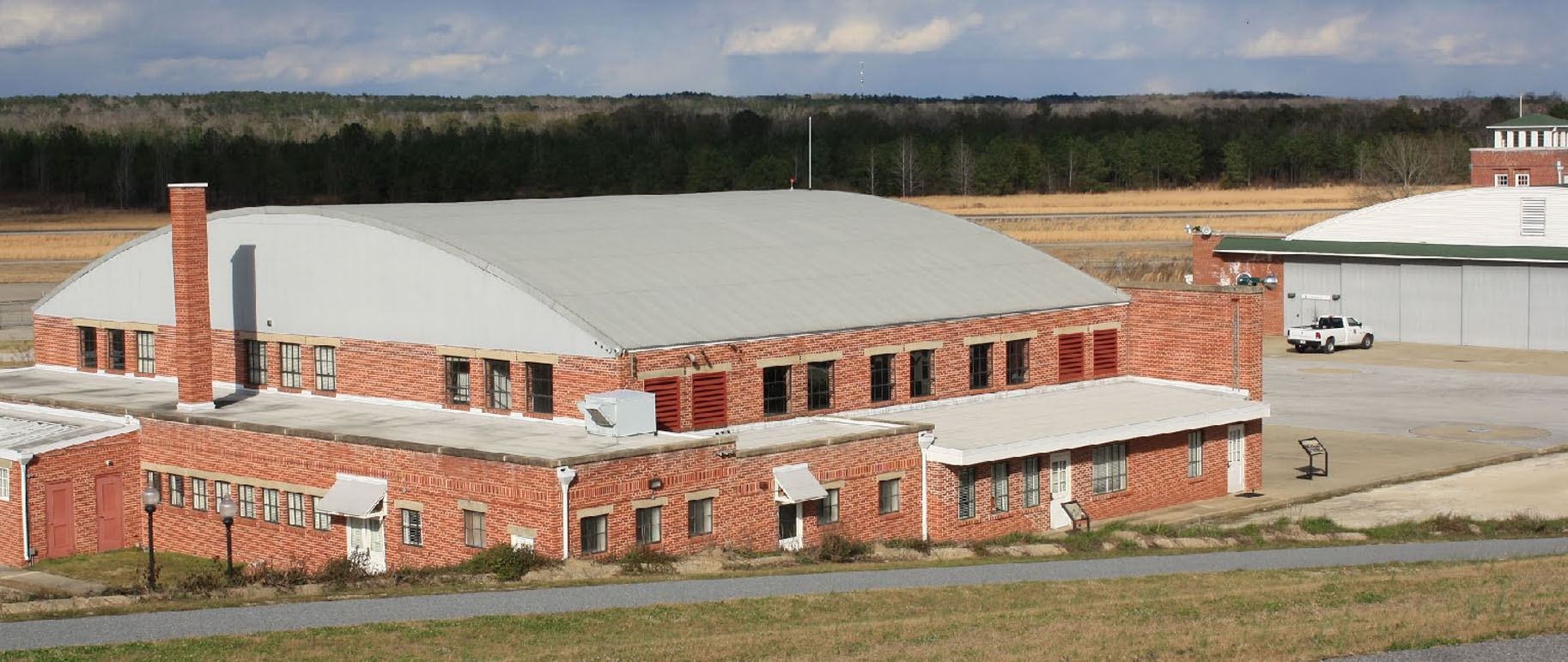
Moton Field
Moton Field was the only primary flight facility for African-American pilot candidates in the U.S. Army Air Corps (Army Air Forces) during World War II. It was named for Robert Russa Moton, second president of Tuskegee Institute.
Built between 1940 - 1942 with funding from the Julius Rosenwald Fund, Moton Field was to provide primary flight training under a contract with the U.S. military. Staff from Maxwell Field, Montgomery, Alabama, provided assistance in selecting and mapping the site. Architect Edward C. Miller and engineer G. L. Washington designed many of the structures. Archie A. Alexander, an engineer and contractor, oversaw construction of the flight school facilities. Tuskegee Institute laborers and skilled workers helped finish the field so that flight training could start on time.
The Army Air Corps assigned officers to oversee the training at Tuskegee Institute at Moton Field. They furnished cadets with textbooks, flying clothes, parachutes, and mechanic suits. Tuskegee Institute, the civilian contractor, provided facilities for the aircraft and personnel, including quarters and a mess for the cadets, hangars and maintenance shops, and offices for Air Corps personnel, flight instructors, ground school instructors, and mechanics. Tuskegee Institute was one of the very few American institutions to own, develop, and control facilities for military flight instruction.
Read MoreAfter pilot cadets passed primary flight training at Moton Field, they transferred to Tuskegee Army Air Field (TAAF) to complete their training with the Army Air Corps. TAAF was a full-scale military base, (albeit segregated,) built by the U.S. military.
The facility at Moton Field included two aircraft hangars, a control tower, locker building, clubhouse, wooden offices and storage buildings, brick storage buildings, and a vehicle maintenance area. The base at Tuskegee Army Air Field was closed in 1946. In 1972, a large portion of the air field at Moton Field was deeded to the city of Tuskegee for use as a municipal airport which is still in use today.
